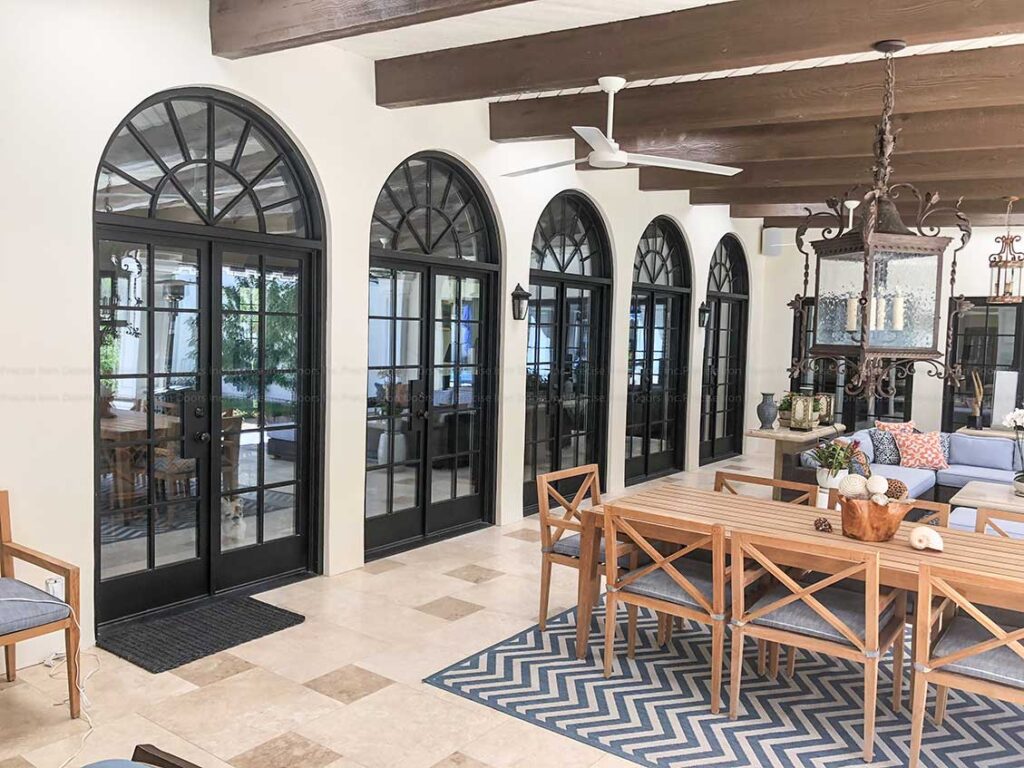Industrial environments are unforgiving. Heat, solvents, abrasion, and UV light constantly attack surfaces—and anything printed on them. That’s why industrial labels aren’t just stickers; they’re critical components of safe operations, regulatory compliance, and equipment reliability. The right label communicates hazards, instructions, and traceability data for years, not months. Below is a practical guide to help engineers, EHS leaders, and operations teams design labels that last and pass audits.
1) Start with the regulatory map
Before choosing materials or layouts, define every standard your labels must satisfy. Requirements differ by application and industry, and getting them wrong is expensive.
- Safety and hazard communication: Many organizations follow ANSI Z535 and OSHA requirements for signal words, color, and layout. Chemical labeling often aligns with GHS.
- Product safety & durability: Nameplates and safety markings sometimes require third-party recognition (e.g., UL 969 for Marking and Labeling Systems).
- Electrical/mechanical equipment: Standards may specify permanence, legibility, and resistance to specific solvents, lubricants, or cleaning regimens.
- Sector-specific rules: Medical, aerospace, food processing, or mining may add sterilization, outgassing, or foreign material controls.
Document these constraints first. They inform everything from adhesive chemistry to font size.
2) Engineer for the environment
The service environment determines how long industrial labels last. Consider:
- Temperature range: Will the label live on a hot motor housing, near cryogenic lines, or cycle between both? Thermal expansion and adhesive glass transition matter.
- Chemical exposure: Oils, fuels, brake cleaner, caustics, disinfectants, MEK, and isopropyl alcohol degrade inks, films, and adhesives differently.
- UV and weathering: Outdoor or high-UV indoor zones require UV-stable inks, films, and overlaminates.
- Abrasion and impact: Forklifts, tools, or belts can scuff labels. Add hardcoat laminates or recessed mounting.
- Moisture and washdowns: Steam, pressure washing, and sanitizer cycles demand edge-sealed constructions and chemical-resistant adhesives.
- Surface energy and texture: Powder coat, polyethylene tanks, rough castings, and stainless steel each bond differently.
Capture these environmental factors in a brief “label design spec.” It becomes the backbone for material and print choices.
3) Choose the right label construction
A durable label is a system—face stock + ink + adhesive + liner + (often) overlaminate.
Face stocks
- Polyester (PET): Excellent dimensional stability, heat/chemical resistance, crisp print; common for rating plates and asset tags.
- Polycarbonate: Great clarity and impact resistance; often back-printed for control panels; pair with textured hardcoats for abrasion.
- Vinyl (PVC): Conformable for curved/rough surfaces; good outdoor performance; check plasticizer migration.
- Polyimide: High-temperature champion (think PCB reflow labels).
- Aluminum & anodized aluminum: For extreme durability and tamper evidence; laser-markable options offer superior permanence.
- Paper: Acceptable for secondary packaging or short-term WIP—typically not for critical safety use.
Adhesives
- Acrylic: Broad temperature range, chemical resistance, long-term stability; many “high-tack” variants for low-surface-energy plastics.
- Rubber-based: Excellent initial tack, good for rough or cold-applied surfaces; lower chemical/heat resistance.
- Foam adhesives: Bridge texture and provide vibration damping for panels or nameplates.
Overlaminates & topcoats
- UV-blocking films, textured hardcoats, or chemical-resistant varnishes protect print. For harsh cleaners, specify a laminate proven against your exact chemistry.
4) Match print method to performance
Different print technologies produce different durability profiles.
- Thermal transfer (resin ribbon): Workhorse for on-demand industrial labels. With PET or polyimide film and resin ribbons, you get solvent/abrasion resistance and fine barcodes.
- Digital UV inkjet: Fast, high-quality color, good chemical and UV resistance—especially with durable films and laminates.
- Laser marking (including CO₂/fiber on coated metals or anodized aluminum): Exceptional permanence for rating plates and serials.
- Screen printing: Thick, opaque inks, superb outdoor life on metal and polycarbonate overlays; ideal for high-volume panels.
- Electrophotographic/toner: Good general durability; verify with laminates for chemical exposures.
- Inkjet with dye/pigment: For GHS and color coding; confirm with laminates and solvent testing.
Specify ink-substrate compatibility and confirm using your actual cleaning agents and dwell times.
5) Prioritize legibility: typography, contrast, and hierarchy
A label that survives but can’t be read is failing its job.
- Typeface: Choose simple, open shapes (e.g., Helvetica, Source Sans, or similar). Avoid condensed styles for small sizes.
- Minimum size: For safety text viewed at arm’s length, ~6–8 pt minimum for body text; larger for greater distances or low light.
- Contrast: Black on white/light or white on dark, with a flat/matte finish to minimize glare. Avoid printing fine text over photos or gradients.
- Hierarchy: Use signal words, headers, bullets, and spacing so eyes land on the critical message first. Information scent matters under stress.
- Pictograms: Standardized icons speed comprehension and aid multilingual workforces. Pair with clear captions.
6) Color, signal words, and hazard structure
When using industrial labels for safety, align color and layout with recognized conventions:
- Signal words: DANGER, WARNING, CAUTION—each with associated color bands and severity meanings.
- Color cues: Red for immediate hazards, orange for serious risk, yellow for caution, blue/green for mandatory action or safety info.
- GHS elements (for chemicals): Product identifier, pictograms, signal word, hazard statements, precautionary statements, and supplier info. Ensure label size accommodates all required elements without cramping.
Consistency across the site reduces confusion and improves compliance training.
7) Barcodes, serialization, and machine readability
Traceability often depends on robust scanning in tough conditions.
- Choose the right symbology: Code 128 or Data Matrix for compact, high-density data; QR for human-friendly links; UPC/EAN for retail interfaces.
- Quiet zones & contrast: Follow spec-defined quiet zones; test against dirty or reflective surfaces.
- Direct Part Mark (DPM) alternatives: Where labels can’t survive (e.g., hot machined parts), consider laser-etched DPMs, then supplement with process labels during WIP.
- Verification: Use ISO/ANSI barcode grading. Poor print contrast or damaged laminates will downgrade scores and slow scanning.
- Serialization & data governance: Standardize serial formats, avoid ambiguous characters (O/0, I/1), and document handoff to ERP/MES.
8) Surface prep and application
Even the best adhesive fails on a dirty surface.
- Clean: Remove oils and release agents with the approved solvent for your facility (IPA is common; verify compatibility).
- Dry: Moisture under the label traps contaminants and weakens bond.
- Apply pressure: Most pressure-sensitive adhesives need firm, uniform pressure to wet-out. Use a roller or squeegee.
- Temperature: Apply within the adhesive’s recommended range; cold surfaces can prevent wet-out.
- Edge sealing / rivets: For extreme washdown or peel risk, consider mechanical aids or edge-seal topcoats.
Write a short work instruction so the process is repeatable across shifts.
9) Test like your environment—then certify
Simulate the real world before full rollout:
- Chemical rubs & soak tests: Use your actual cleaners, fuels, and disinfectants with defined dwell times. Include abrasion between cycles.
- Thermal and humidity cycling: Prove labels survive your temperature extremes and condensation.
- UV exposure: Accelerated weathering if outdoor.
- Adhesion testing: 180° or 90° peel, shear tests, and edge-lift checks.
- Barcode verification: Grade after environmental conditioning, not just at print.
If your market requires it, select constructions recognized for the needed standards (e.g., a UL-recognized system), then keep the exact materials and print method stable to retain certification.
10) Maintenance, change control, and reorders
Longevity also depends on good management.
- Inspection cadence: Add labels to preventive maintenance. Look for fading, edge lift, and abrasion; replace proactively.
- Version control: Treat label art like controlled documents. Lock down fonts, colors, icons, and wording; track revisions with change orders.
- Reorder strategy: Source from vendors who can reproduce exact materials and inks. Substitutions can void durability assumptions or certifications.
- Spares & kits: Include spare labels with replacement parts or toolkits so techs can restore compliance in the field.
11) Smart labeling: when to add data and connectivity
Industrial labels can be gateways to richer information.
- RFID/NFC: Useful for inventory, tool control, and maintenance logs—especially where line-of-sight barcode scanning is awkward.
- QR deep links: Point to SOPs, lockout/tagout steps, or 3D exploded diagrams. Keep URLs permanent; use redirects you control.
- Tamper-evident features: Frangible films, void patterns, or holographics for warranty control and safety interlocks.
Balance benefits against environmental durability. Choose inlays and antennas tested for your substrate and temperatures.
12) Cost, supply chain, and sustainability
Durable industrial labels don’t have to blow up budgets—but false economies are expensive.
- Total cost of ownership: Factor rework, downtime, and audit risk—not just price per label.
- Supplier capability: Prioritize vendors who provide application engineering, lab testing, and traceable constructions.
- Sustainability: Explore recyclable liners, solvent-free adhesives, and designs that reduce waste. For temporary labels, consider reusable carriers or metal plates with replaceable inserts.
Common pitfalls to avoid
- Designing before requirements: Skipping the regulatory and environment spec leads to reprints and audit findings.
- Overstuffed layouts: Tiny fonts and dense text reduce comprehension and increase liability.
- Mixed constructions: Swapping a ribbon, laminate, or adhesive without revalidation can tank durability.
- Ignoring application process: Poor surface prep defeats premium materials.
- No field testing: Lab-only validation misses real-world cleaners, wear patterns, and lighting conditions.
A quick, practical checklist
- Define requirements: Safety, product, and sector standards.
- Document environment: Temperature, chemicals, UV, abrasion, moisture, surface energy.
- Select construction: Face stock, adhesive, ink system, overlaminate that match the environment.
- Design for legibility: Clear hierarchy, compliant colors/signal words, adequate font sizes, standardized pictograms.
- Plan data: Barcodes/QR, serialization rules, and verification approach.
- Specify application: Surface prep, pressure, temperature, and tools.
- Test & certify: Chemical, thermal, UV, abrasion, adhesion, and barcode grading—using your real conditions.
- Govern & maintain: Version control, inspection cadence, and stable sourcing.
Bottom line: Thoughtfully engineered industrial labels safeguard people, simplify audits, and keep equipment running. Treat them as part of your product, not an afterthought. Start with the environment and compliance requirements, choose a construction proven to survive both, and lock in a consistent, testable process—from artwork to application to inspection. That’s how you get safety, compliance, and longevity… on one small piece of real estate.






